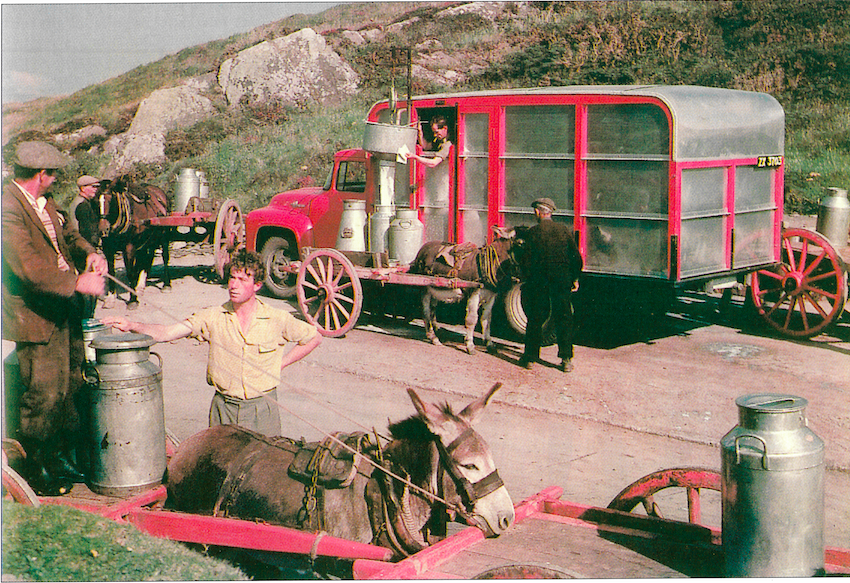
On the evening of 18 April 1894 a triumphant Horace Plunkett wrote in his diary: The meeting to inaugurate the lAOS [Irish Agricultural Organisation Society] came off and was brilliantly successful. About 250 present and thoroughly representative of all sides of Irish life. I spoke for 1 1/4 hours & spoke well. The movement is now started.’ In a longer entry at the end of the year he outlined his aims in establishing the organisation:
The chief industry of Ireland is agriculture. The welfare of the country may be seen to depend almost entirely on the welfare of the agricultural industry. This has been hard hit by foreign competition. On the other hand the relations between landlord and tenant had been greatly improved, so much so that peace reigned almost throughout Ireland and the opportunity for improvement in the actual conduct of farming had arrived … Among all the remedies suggested to deal with the depression of agriculture none seemed to offer any real aid to the farmer except Protection and that was unattainable.
In Plunkett’s mind, a large part of the answer lay in co-operative organisation, a system which in other countries had been successfully adapted to many areas of economic life, including agriculture. To the objection that farmers, particularly Irish farmers, were ‘uncombinable atoms’, he countered with the working example of co-operative creameries. Encouraged by success in the dairying industry, he now proposed to apply combination to every branch of the farmer’s business. All that was needed, he believed, was effective propaganda, and this in turn was a question of money and influential backing. He propounded, therefore, ‘a scheme for the formation of a society (the lAOS) to send paid organisers to organise co-op societies throughout Ireland and generally to instruct the farming community upon what can be done by co-operation’.
‘Help Versus Money’
The foundation of the IAOS marked the coming of age of the Irish agricultural co-operative movement. In March 1888 Plunkett had written an article, ‘Help Versus Money’, which he described as ‘a suggestion to the rich to help the poor by doing their trading with them by means of co-operative stores’. Thus, his early intention was to initiate a co-operative movement based on the retailing British model. It seems he was only dimly aware of the role played by a different form, the agricultural cooperatives in countries like Denmark.
The idea of applying the co-operative method in Ireland was not new. Since the 1860s a small number of cooperative stores had come into existence, but progress was limited. Professor Baldwin, in the course of evidence to the Richmond Commission in 1881, noted the paradox: while Irish workers in England were the most numerous patrons of the cooperative stores there, they had not tried to apply the principle when they returned to Ireland. A report compiled by J.C. Gray of the Co-operative Union in Britain mentioned some thirteen societies in the country by the end of the 1880s, some fairly successful and others almost moribund.
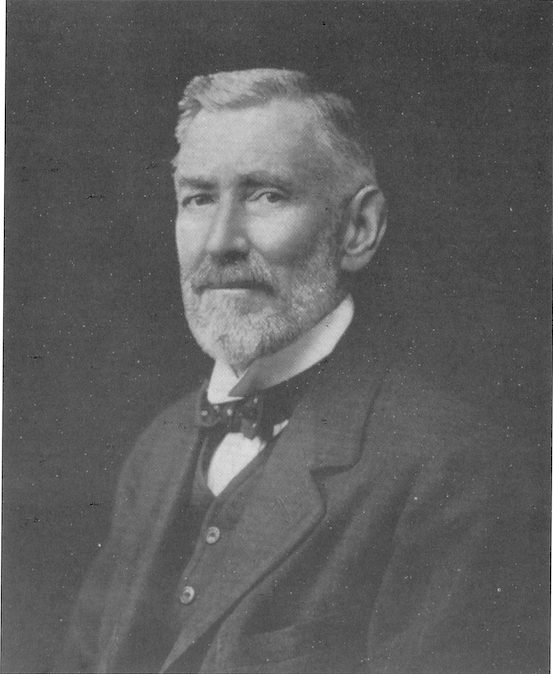
Difficulties in Ireland
There were difficulties in relation to consumer co-operation in Ireland. In Britain and on the Continent, this form of organisation was primarily an urban phenomenon, its members drawn from the working and lowermiddle classes. In Ireland, Plunkett’s efforts were directed at farmers but because they were comparatively illeducated and unorganised, he felt that the ‘upper classes’ would have to start the movement ‘leaving the door wide open for the lower classes to join in’. This paternalistic approach had its parallels elsewhere in Europe but in Ireland the environment was particularly difficult. Tensions were still high in the aftermath of the Land War and landlord involvement in the movement was an issue . which shopkeepers and traders, worried ,about competition from co-operative stores, were quick to seize upon. Plunkett’s own social background, which was firmly located in the Irish landed ascendancy, and even his manner of speech (described by one contemporary as ‘Englified’) did not help.
Traders, sometimes mobilised through the Home Rule party organisation, discouraged the formation of co-operative stores. More significant was the indifference of farmers and rural labourers to the idea of consumer co-operation. As it turned out, Plunkett’s observation of the crisis facing Munster farmers in the butter export trade led him to switch his efforts to creamery co-operation and he met with a far better response. Creameries were urgently needed. Butter had been an important Irish export since the seventeenth century from the famous Cork butter market as well as from Waterford and Limerick. This was the heavily-salted, hand-churned butter, marketed in firkins. The standards of the Cork market, in particular, had originally been high and strictly enforced. By the late nineteenth century, however, abuses were rife. Moreover, consumer taste had switched to fresher, lightly-salted butter of the type produced in Normandy by factory blending and in Scandinavia using the newly-invented cream separator. At the same time margarine and margarine/ butter mixtures were capturing the lower end of the market, squeezing the market for Irish butter even further. Some proprietary and joint-stock creameries, equipped with cream separators to manufacture the new-style butter, had already been set up in the traditional butter-producing areas in Munster but they were not spreading sufficiently rapidly to serve the urgent needs of dairy farmers, who were facing the collapse of their industry. Thus they were open to the idea of creamery co-operation, despite its innovative and potentially risky character. By the turn of the century there were 191 co-operative creameries in Ireland.
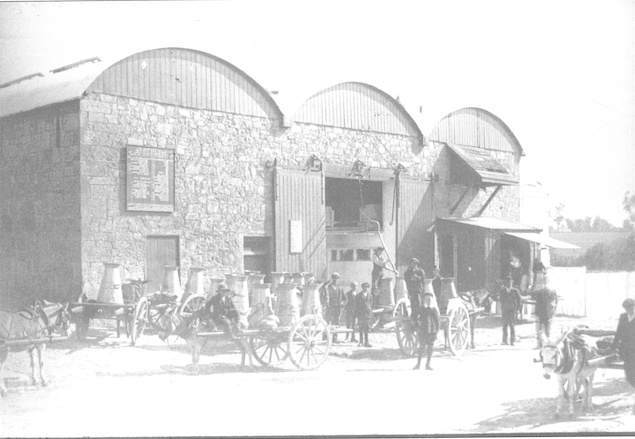
Conflict with the British movement
The move from consumer co-operation into the promotion of creameries led to conflict with the British Co-operative Union, which had helped finance some of the early propagandising in Ireland. Some members felt that Plunkett and his followers were neglecting consumer co’ operation. The Irish leaders pleaded their case at Co-operative Congresses in 1892 and 1893, explaining the difficulties of struggling against the rural retailers and suggested that once cooperative production had been established in Ireland co-operative stores would be ‘only a question of time’. At the same time they mentioned a desire on the part of farmers in some areas to set up stores attached to creameries. In frustration with the attitudes of British co-operators, Plunkett was driven in 1894 to create an independent Irish organisation—the IAOS—for the purposes of promoting agricultural co-operatives. Support for the more controversial consumer co-operation was abandoned.
Relations between British and Irish co-operators remained strained, reaching breaking point in 1895 when the Manchester-based Co-operative Wholesale Society (CWS) established creameries in Ireland in competition with Irish co-operatives. The CWS, as the central wholesaling body of the British retail co-operative movement, already had economic interests in Ireland, including butter-buying agencies, and the move to set up creameries seemed a logical extension of its own business activities.
Charges of imperialism
Irish and British co-operators had run into one of the most difficult dilemmas in co-operative practice. There is a basic conflict of interest between producers and consumers, with producers aiming to achieve the highest return for their products and consumers seeking the lowest possible price for goods. In essence, there were two competing visions of how a co-operative commonwealth was to be realised-through consumer cooperation or through producer cooperation. In Ireland the contradiction was sharpened by the fact that the CWS was British-based and the creamery co-operative movement was indigenous. Charges of imperialism were levelled at the Wholesale Society. It was a large and wealthy organisation which posed a serious threat to the Irish movement. It could buy up creameries and equip and run them at no expense to the local milkproducing farmers , though the longer-term effect would be a loss of control and economic dependency. Particularly worrying for Irish cooperators were indications that some farmers were prepared to take the short-term view, preferring to entrust the development of the milk-processing industry to outside interests.
An added contradiction was political in nature. Both organisations were nominally non-party political. Yet the historian of the British movement, G.D.H. Cole, noted the ‘unspoken alliance’ between the British cooperative movement and the Liberal Party, based on their common commitment to the principles of free trade. The Irish movement, on the other hand, through Plunkett, had informal links with the Unionist party
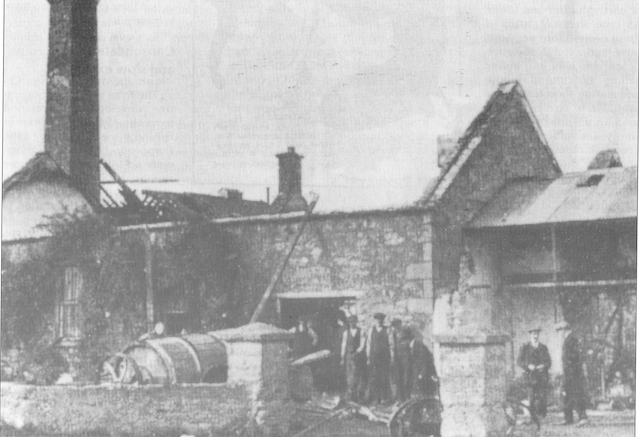
Joint purchasing and quality control
Although the path of consumer cooperation was virtually closed to the Irish movement, it did establish agricultural societies which jointly purchased agricultural necessities such as seeds, fertilisers and tools. By 1903 there were 140 such societies with a total membership of 13,981, situated mainly in the arable farming areas of the West and the South East. By bulking their members’ orders, one society or even a group of societies, could buy directly from wholesalers, thereby achieving significant reductions in costs. But at least as important was the introduction of quality controls by the societies. Adulterated fertilisers and bad seed had been a recurrent problem in Irish agriculture. Theoretically it was possible for individual farmers to have their purchases tested but this was a troublesome and costly process. Organised in agricultural societies, farmers could demand quality guarantees and compensation if the goods were below standard.
Retailers reacted unfavourably to this incursion into a portion of their trade. The most dramatic confrontation took place near, Thurles in the spring of 1895; when five agricultural societies bulked their orders for fertilisers and invited tenders from manufacturers. In response, the local fertiliser merchants formed the Mercantile Traders’ Association, and pledged not to trade with any cooperative societies. As the date for the submission of tenders approached two merchants broke ranks and dealt with the societies, By dealing in bulk it was calculated that farmers on average saved around £5,000 on the cost of fertilisers and seeds. The effect around the country, according to the chief organiser for the IAOS, RA Anderson, was electrifying: there were marked reductions in the cost of these goods as retailers sought to discourage similar developments in their own areas. A less typical response by some traders was to refuse to sell domestic goods to farmer-co-operators. This had the effect of encouraging the societies to move into the sale of domestic as well as agricultural requirements, a trend not officially encouraged by the IAOS.
Banking
In the same year that the IAOS was founded , the first experiment in cooperative banking was undertaken at Doneraile, County Cork. The major demand for credit co-operation, however, came from the West of Ireland. Credit societies sought to combat chronic rural indebtedness among small farmers, something which had increased significantly during the previous decade. Loans were provided ‘for productive purposes’ to small groups of farmers under the Raiffeisen system of unlimited liability. With its emphasis on encouraging thrift and honesty, co-operative banking was believed to have important educational and social effects but its economic significance was probably to assist small farmers to buy stock and move increaSingly from subsistence towards commercial farming.
The First World War ushered in six years of prosperity for the Irish economy, in which co-operatives shared fully, but these artificial economic conditions were not maintained. In 1914 there were in excess of 800 cooperative societies in Ireland. By any standards, this was a remarkable achievement. The largest sector (350), and the most significant in financial terms, was composed of dairy or creamery cperatives. 222 societies supplyed agricultural inputs, such as fertilisers, seeds and agricultural implements. There were 233 credit societies, which, unlike modern credit unions, were found disproportionately in the poorer districts of the West of Ireland. There was a variety of other societies, the most exotic of which was probably the Templecrone ‘cope’ in west Donegal, where the local co-operators waged a war against gombeenmen, shopkeeper-politicians, priests and other vested interests.
Mould set by 1914
The mould of Irish cooperative development had been set by 1914. With the prominent exception of the Belfast Co-operative Society, which serviced the retailing needs of urban workers in Belfast, co-operation in Ireland was largely confined to the agricultural sphere. Creamery societies dominated in terms of members, turnover and value added, and were to be found in the traditional dairying regions of north Munster and Ulster. As time went by, many of these evolved into multi-purpose agricultural societies, processing milk into butter, selling agricultural inputs, and making short-term credit available to farmers. Paradoxically, the prosperity of the war years undermined the economic rationale for credit societies, though it is not clear why the onset of depression in Irish agriculture after 1920 did not lead to a revival of this form of cperation. By 1930, there were only fifty-two surviving credit societies, less than a quarter of the prewar level. Similarly, agricultural societies had developed only a limited vigour by 1914, and, with a few notable exceptions, these also entered a phase of terminal decline during the interwar period. In short, the future of cperation lay with the agricultural co-operatives, and with the dairy co-operatives in particular.
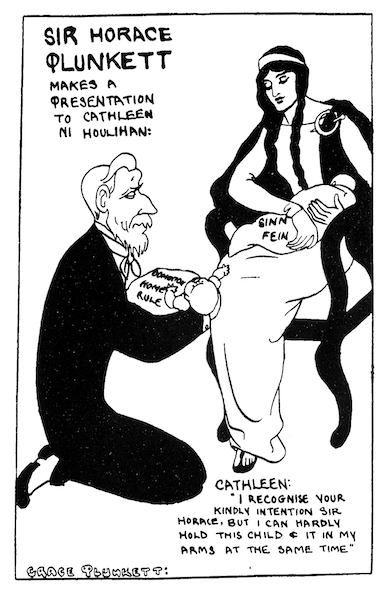
War of lndependence
The short interlude between the end of the First World War and the partition of Ireland saw cperatives embroiled in new. forms of conflict during the War of Independence 1919-21. Several dozen creameries, many of them in west Tipperary where much of the early fighting took place, were damaged or destroyed by the British army. The rationale for these attacks was explained, and condemned, by George Russell (AE), the editor of the cperative paper, the Irish Homestead;
The co-operatives have hundreds of members and if barracks have been burned or police have been killed or wounded in the lamentable strife now being waged in Ireland, and if the armed forces of the Crown cannot capture those actually guilty of the offences, the policy of reprisals, condoned by the spokesmen of the Government, has led to the wrecking of any enterprise in the neighbourhood, the destruction of which would inflict widespread injury and hurt the interests of the greatest number of people.
Political change and the emergence of two new states after 1920 had little long-term impact on the fortunes of Irish cooperatives, though the IAOS was forced to partition itself into two entities—the IAOS in the South and the newly-created Ulster Agricultural Organisation Society in the North. Ironically, this division was forced by the government of the Irish Free State. But the real forces shaping co-operative development were economic rather than political.
Survival in the interwar years
If the period up to the First World War was the formative or heroic phase of co-operative development, the interwar period was one of survival in an increasingly hostile economic environment for Irish agriculture generally. Prices for farm products were low due to intense competition from overseas, and the so
Consolidation and slow expansion
The third phase of co-perative development stretched from the 1940s to the eve of Ireland’s entry into the European Economic Community on 1 January 1973. These were years of consolidation and slow expansion. The larger societies such as the federation of creameries in Limerick known as Golden Vale or the more closely integrated Mitchelstown Creameries in north Cork diversified into a new range of products, cheeses, milk powder and dairy engineering. This period also witnessed the introduction of the livestock mart, a new form of cooperation of special value to cattle producers, which offered auction facilities for the sale of livestock, thereby undermining the cattle fairs which for centuries had been a colourful, if malodorous feature of Irish town life. Like the co-operative enterprises of the late nineteenth century, these farmer-controlled cat tie marts experienced initial opposition from local vested interests (cattle dealers in particular), but they proved to be resilient, primarily because they conferred real economic benefits on farmers. Increasingly, albeit to a limited extent, farmers were accepting the IAOS doctrine that the co-operative should be seen as an extension of the farm business. The prospect of entry into the EEC in the early 1960s gave rise to a more urgent debate about rationalisation within the dairy processing industry. Though entry was delayed for a decade, the IAOS took the lead in promoting ideas of merging existing societies into larger, more competitive groupings.
These efforts enjoyed greater success in the 1970s, as farmers’ resistance to the closure of small, uneconomical plants declined. The passing of the roadside creamery, with its local committee, was regretted by many but this was but part of a wider process of economic and social change affecting the countryside. Other manifestations were the closure of the two-teacher country schools and the phasing out of the smaller Garda stations, country shops and post offices. Technological change, including changing transport costs, the emergence of new marketing possibilities and the potential for economies of scale shifted the economic calculus in favour of rationalisation.

Diversified agri-business complexes
With virtually unlimited access to the lucrative dairy markets of the EEC and buoyant prices, milk production in the Irish Republic doubled during the first decade of entry. Reflecting the drive towards rationalisation, 70% of the milk processing was carried out by only four major co-operatives, while a longer tail of smaller co-operatives accounted for the remaining 30%. During the 1980s, however, the surplus of dairy products within the EEC led to the imposition of physical quotas on the amount of milk produced. This served to limit the phenomenal growth, not only of milk production on the farms, but of milk processing as well. However, by the 1980s, the larger dairy co-operatives had evolved into diversifed agri-business complexes, with a declining dependence on the traditional raw material of milk. Some societies had stretched the concept of the co-operative to establish subsidiary companies based on the legal principles of the private enterprise or joint-stock company. For example, the largest society, in terms of members, value added and employment, Kerry Cooperative, had a turnover of £827 millions in 1992, with subsidiary companies in many countries of the world. In just a few generations, farmers in Kerry had progressed from home buttermaking and roadside creameries to being the collective owners of a multinational business corporation.
The IAOS, renamed the Irish Cooperative Organisation Society, was the co-ordinating force during this century of co-operative development. Its ninety-ninth annual report provides a summary of its achievements. There were only thirty-four dairy societies, as compared to 350 in 1914. While the number of societies had been reduced by one-tenth, membership of dairy co-operatives had almost doubled, from 47,000 in 1914 to 92,000 in 1992. These diverging trends are one indication of the change of scale and the extent of rationalisation within the industry. Dairy co-operatives had a turnover of £5 billions in 1992 and employed just under 20,000 people (ten per cent of Irish manufacturing employment). As in 1914, the dairy societies dominated within the co-operative sector of the economy: while they accounted for just over half (fifty-three per cent) of the membership, they were responsible for eighty-one per cent of turnover and eighty-eight per cent of employment.
The co-operative sector is indigenously owned, unlike much of manufacturing activity in the Irish Republic, where external ownership is now the norm. In fact, six of the top twenty Irish firms, measured in terms of turnover, were co-operatives in 1992. But the performance of indigenous Irish industry has been the subject of much unfavourable comment, from the report of the Telesis Consultancy Group in 1982 onwards. Weak profits, limited investment and a low propensity to innovate have been identified as characteristic shortcomings, many of which also apply to the co-operative sector. It may well be that the more democratic structure of co-operatives, as compared to joint-stock companies, militated against accumulation and investment, with the farmer-shareholders extracting the maximum short-term returns from their cooperatives at the expense of longer term business strategies. Thus, despite the undoubted progress, there are some grounds for believing that the economic and developmental potential of Irish co-operatives has yet to be fully realised.
Carla King lectures in history at St Patrick’s College, Maynooth. Liam Kennedy lectures in economic and social history at Queen’s University, Belfast.
Further reading:
P. Bolger, The Irish Co-operative Movement, its History and Development (Dublin 1977).
T. O’Brien, Co-operative Bibliography, with Special Reference to Ireland (Coleraine 1979).
T. West, Horace Plunkett, Co-operation and Politics. An Irish Biography (Buckinghamshire and Washington DC 1986).
